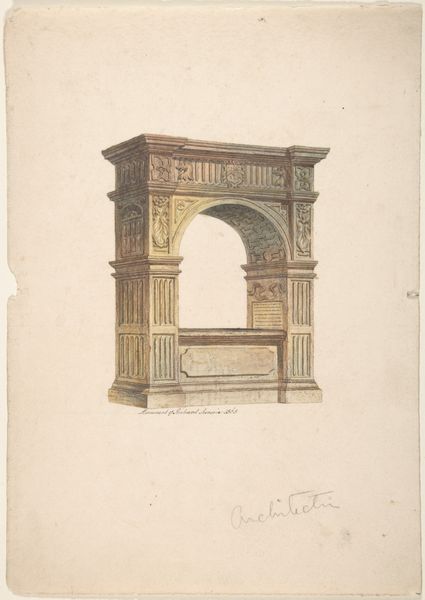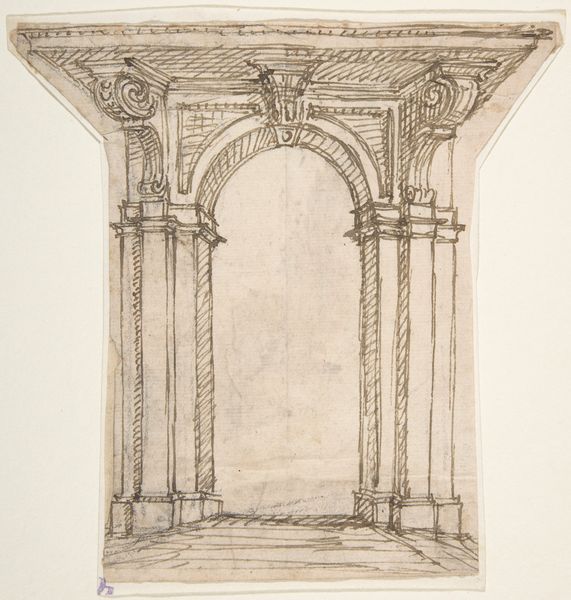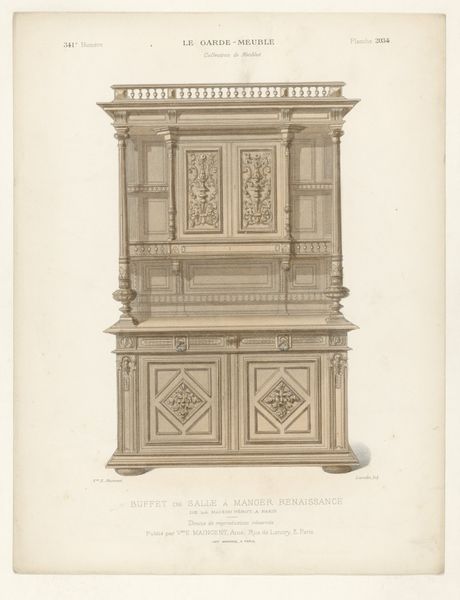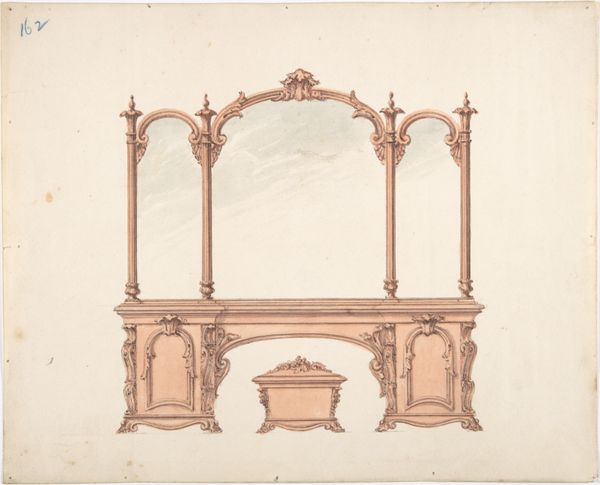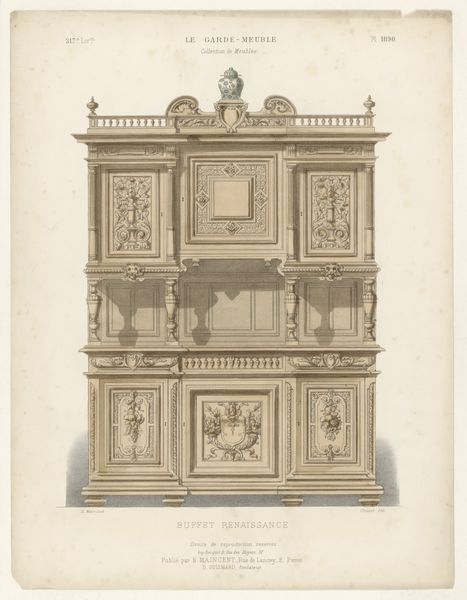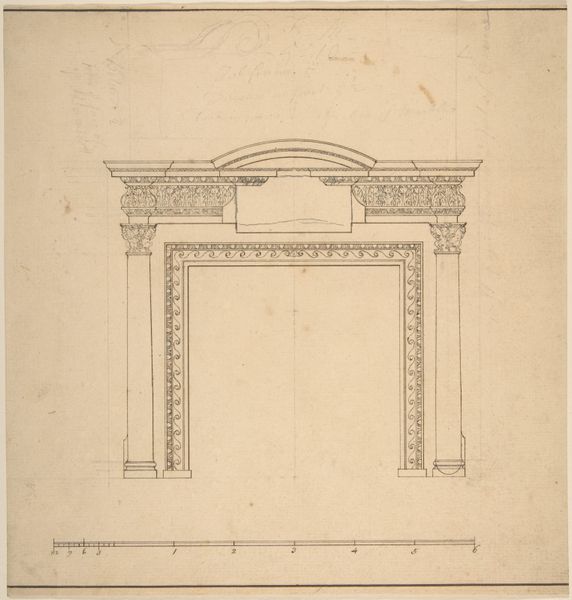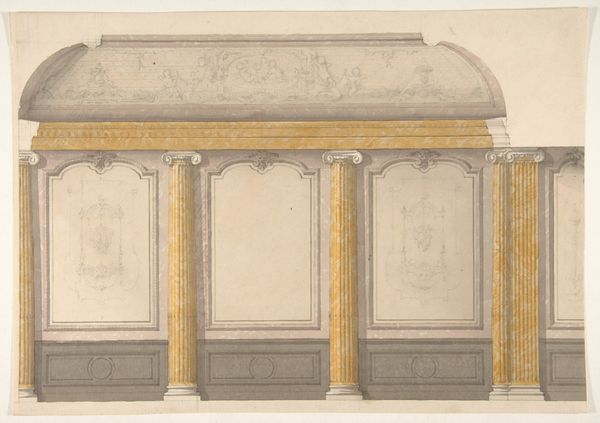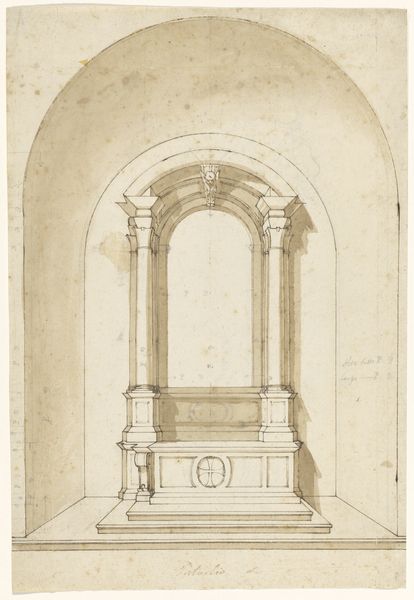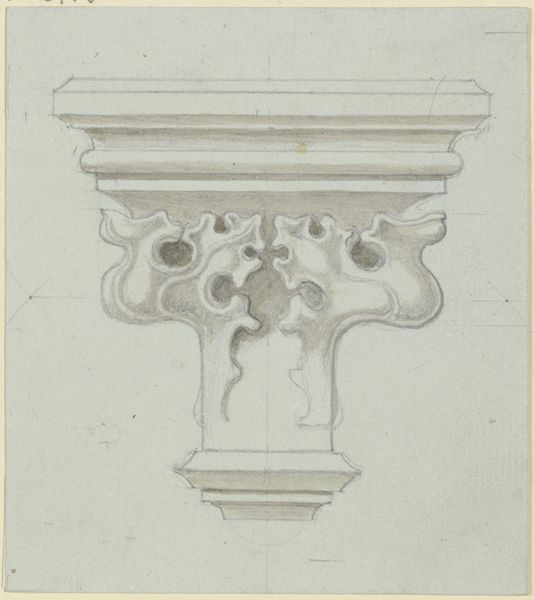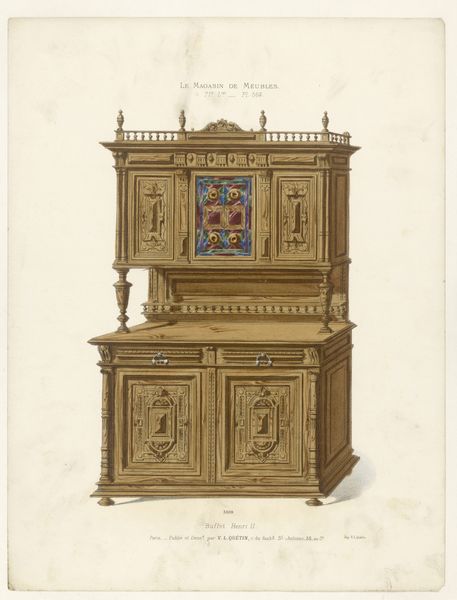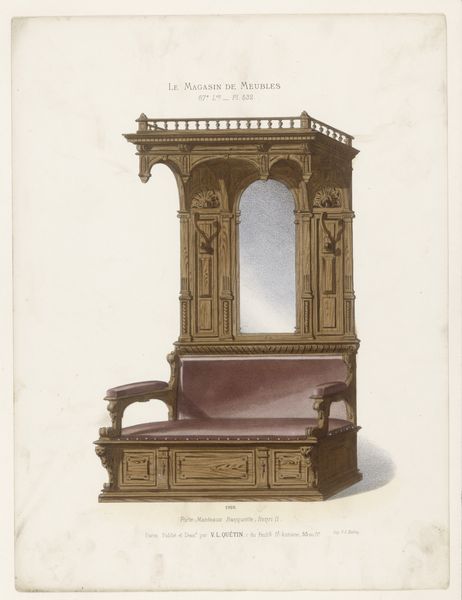
drawing, paper, watercolor, architecture
#
drawing
#
classical-realism
#
paper
#
watercolor
#
academic-art
#
watercolor
#
architecture
Dimensions: overall: 35.4 x 27.7 cm (13 15/16 x 10 7/8 in.) Original IAD Object: none given
Copyright: National Gallery of Art: CC0 1.0
Editor: Here we have Rose Campbell-Gerke’s watercolor and pencil drawing, *Archway*, created around 1940. The precision of the classical architecture depicted is striking, and it gives off a powerful, enduring kind of feeling. What strikes you most about this work? Curator: The image certainly evokes a sense of timeless grandeur, but I'm drawn to consider its potential context. What sociopolitical forces might have inspired its creation in 1940? Is it possible that Campbell-Gerke, as a woman artist, used this traditional architectural form to explore themes of power, perhaps subtly challenging the patriarchal structures inherent in such monumental spaces? Editor: That’s an interesting question, I hadn't thought of it in terms of gendered power. The archway itself is such a dominant form, and of course often signifies triumph, as in triumphal arches… Curator: Exactly. And who traditionally gets to claim triumph, and whose stories are literally inscribed in stone? Considering the classical-realist style, one wonders if Campbell-Gerke was consciously engaging with, or even critiquing, the legacy of colonialism and its visual languages. How does situating it within Academic Art influence its interpretation? Editor: Thinking about it that way definitely makes me reconsider my initial read of just “timeless grandeur.” The layers of history embedded in these forms are impossible to ignore, especially in the context of academic art, and how it carries its own cultural baggage. Curator: It prompts a deeper understanding, doesn't it? Art isn't created in a vacuum, and by examining it through different theoretical lenses we reveal so much more about its complexities and its relationship to the world around it. Editor: I totally agree. Looking closer, I can now appreciate this drawing as less about just an architectural marvel, and more of a dialogue on power and legacy. Thanks for sharing that perspective!
Comments
No comments
Be the first to comment and join the conversation on the ultimate creative platform.
